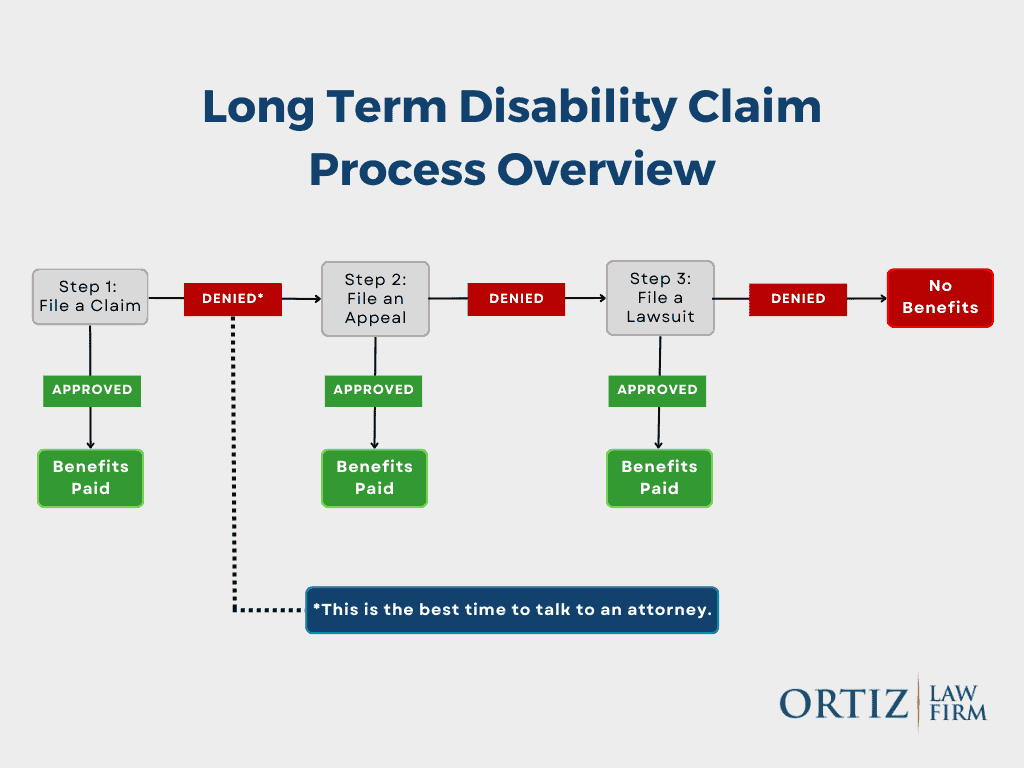On This Page[Hide][Show]
Dealing with chronic vertebrogenic pain can significantly impact your ability to work and carry out daily activities. If you find it difficult to continue working, you may be eligible for long-term disability for vertebrogenic pain. Understanding the process of applying for and receiving these benefits is crucial in ensuring financial stability while coping with the challenges of vertebrogenic pain.
Understanding Vertebrogenic Pain
Causes of Vertebrogenic Pain
Vertebrogenic pain, or vertebral endplate pain, is a form of chronic low back pain caused by damage to the endplates of the vertebrae that contact the discs. The concept that damage to the endplates of your spine may significantly impact chronic lower back pain has gained considerable popularity among researchers in recent years. Researchers now understand that the endplates contain many pain receptors connected to the basivertebral nerve located within the vertebra.
Symptoms of Vertebrogenic Pain
Individuals experiencing vertebrogenic pain report persistent discomfort in the affected area that worsens with physical activity, prolonged sitting, bending forward, or bending and lifting. Pain is commonly described as deep, aching, and burning. Some individuals may experience referred pain, which is felt in other areas of the body, particularly around the spine or glutes.
Individuals may exclusively have vertebrogenic pain, while others may also experience pain associated with a degenerated disc. A degenerated disc occurs when a disc breaks down due to long-term wear and tear. If a degenerated disc in the lower spine compresses the spinal cord, it can also lead to symptoms in the lower body, such as numbness, tingling, and weakness.
Lower back pain is common, but a specific cause is often unidentifiable. A significant portion of the pain previously attributed to disc degeneration may be due to vertebrogenic back pain.
Diagnosing Vertebrogenic Pain
The first step in diagnosing vertebrogenic pain is reviewing your medical history and conducting a physical examination. During the physical exam, you may be required to perform specific movements, such as bending forward, to determine if these actions cause discomfort.

If the doctor suspects an issue with your spinal column, they will likely recommend imaging tests for further evaluation. An MRI can be used to look for the specific changes that occur with endplate inflammation, called Modic changes, which confirm that a patient has vertebrogenic pain. The two types of Modic changes are swelling and inflammation of the bone marrow and red bone marrow being replaced with yellow fatty bone marrow.
Treatment Options for Vertebrogenic Pain
Like with most cases of chronic back pain, doctors typically suggest attempting conservative treatment before considering surgery. Examples of traditional treatment options include:
- Nonsteroidal anti-inflammatory drugs (NSAIDs)
- Muscle relaxants
- Physical therapy
If your pain does not improve after trying these conservative treatments for at least six months, your doctor may recommend other options.
Currently, the most reliable and targeted treatment for vertebrogenic pain is a procedure known as basivertebral nerve ablation. This minimally invasive procedure involves using a laser to halt the transmission of pain signals from the basivertebral nerve to the brain.
Long-Term Disability Insurance
Long-term disability insurance provides coverage for individuals unable to work due to medical conditions such as vertebrogenic pain. This type of insurance offers financial protection by replacing a portion of the insured individual’s income if they cannot work for an extended period.

Filing for Long-Term Disability
When filing for long-term disability due to vertebrogenic pain, it is essential to provide comprehensive medical documentation that supports the diagnosis and the impact of the condition on the individual’s ability to work. This documentation may include medical records, physician statements, and other relevant evidence to substantiate the disability claim. Working closely with medical professionals can help streamline the filing process and increase the likelihood of a successful claim.
Common Challenges and Misconceptions
Many misconceptions surround the coverage of long-term disability insurance for conditions like vertebrogenic pain. Understanding the policy details and seeking clarification from the insurance provider can help dispel these misconceptions and ensure that the individual receives the support they are entitled to.
For example, you may be required to wait a specific time before benefits are payable. Some policies state you must be unable to perform your own occupation, while others say you must prove your inability to perform any occupation. Some policies may even limit coverage for certain musculoskeletal conditions, which means that benefits are only payable for a limited time, even if you are still disabled.
Additionally, one of the most common challenges when dealing with long-term disability insurance for vertebrogenic pain is receiving a claim denial. Insurance companies may dispute the condition’s severity or impairment level, leading to denied claims. Individuals must be persistent and seek legal guidance if the insurance company denies their claims.
By understanding the process of filing for long-term disability and being aware of common challenges and misconceptions, individuals can navigate the complexities of a long-term disability insurance claim with confidence.
Defending Your Long-Term Disability Claim After a Denial
The process of proving a long-term disability claim can be overwhelming, especially when dealing with vertebrogenic pain. If your claim has been denied, you must understand the appeal process, which includes providing additional medical evidence and following the necessary administrative and legal procedures. Understanding this process and the essential procedures will increase the likelihood of a successful appeal.
Medical Documentation and Evidence
Thorough medical documentation is essential for long-term disability claims related to vertebrogenic pain. This documentation should include detailed records of diagnoses, treatment plans, medications, and any other relevant medical interventions. Gathering evidence that supports the impact of vertebrogenic pain on your ability to work is crucial. This evidence may include results from imaging tests, physician notes, and assessments of your functional limitations. Ensure all medical documentation is current and clearly states your symptoms, the resulting limitations, and how they prevent you from working.
FREE RESOURCE: Appeal a Denial with our Long-Term Disability Appeal Guide
Legal and Administrative Processes
Navigating long-term disability claims for vertebrogenic pain requires a meticulous approach that pays attention to detail, includes thorough documentation, and necessitates a comprehensive understanding of the legal and administrative processes. It is advisable to seek legal representation from an attorney specializing in long-term disability claims. An experienced attorney can guide you through the appeals process, help gather the necessary evidence, and advocate for your rights. Seeking professional assistance and ensuring that all relevant medical evidence is well-documented are critical steps toward navigating the complexities of long-term disability claims.
Get Help with Your Long-Term Disability Claim
Claiming long-term disability benefits due to vertebrogenic pain can be a challenging and debilitating experience. It is crucial to seek proper medical attention, document all symptoms and limitations, and work with experienced professionals to navigate the complexities of disability claims. By understanding how vertebrogenic pain affects daily functioning and seeking the necessary support, individuals can increase their chances of obtaining the long-term disability benefits they deserve. If you want to discuss your claim with an experienced long-term disability attorney, call the Ortiz Law Firm at (888) 321-8131.
Sources
- National Institutes of Health. “Vertebrogenic Pain: A Paradigm Shift in Diagnosis and Treatment of Axial Low Back Pain.” Retrieved from: https://www.ncbi.nlm.nih.gov/pmc/articles/PMC9297155/. Accessed on January 16, 2024.
- Healthline. “What are the Causes of Vertebrogenic Pain, and How Is It Treated?.” Retrieved from: https://www.healthline.com/health/back-pain/vertebrogenic-low-back-pain. Accessed on January 16, 2024.
- American Academy of Family Physicians. “Diagnosis and Management of Acute Low Back Pain.” Retrieved from: https://www.aafp.org/pubs/afp/issues/2000/0315/p1779.html. Accessed on January 16, 2024.

